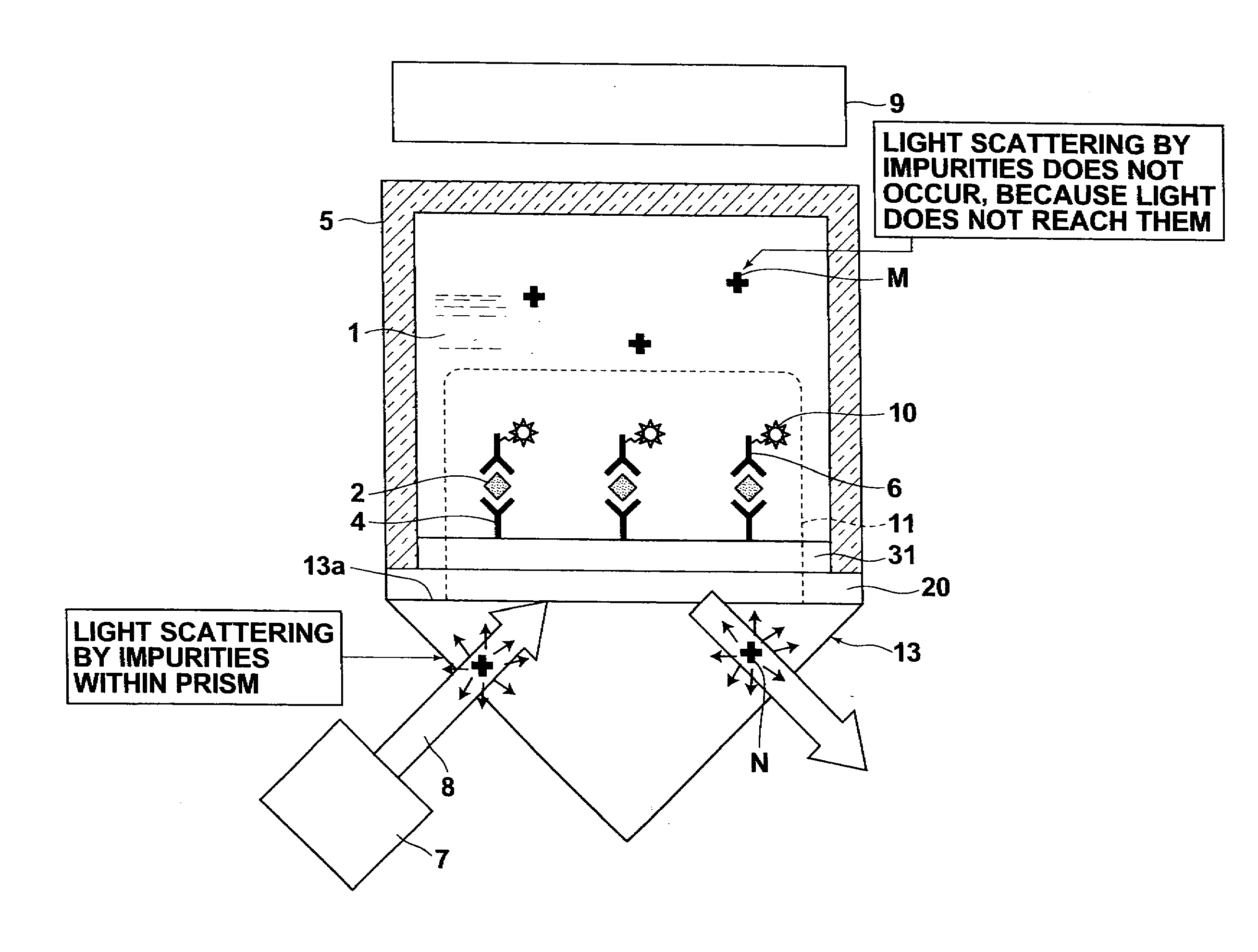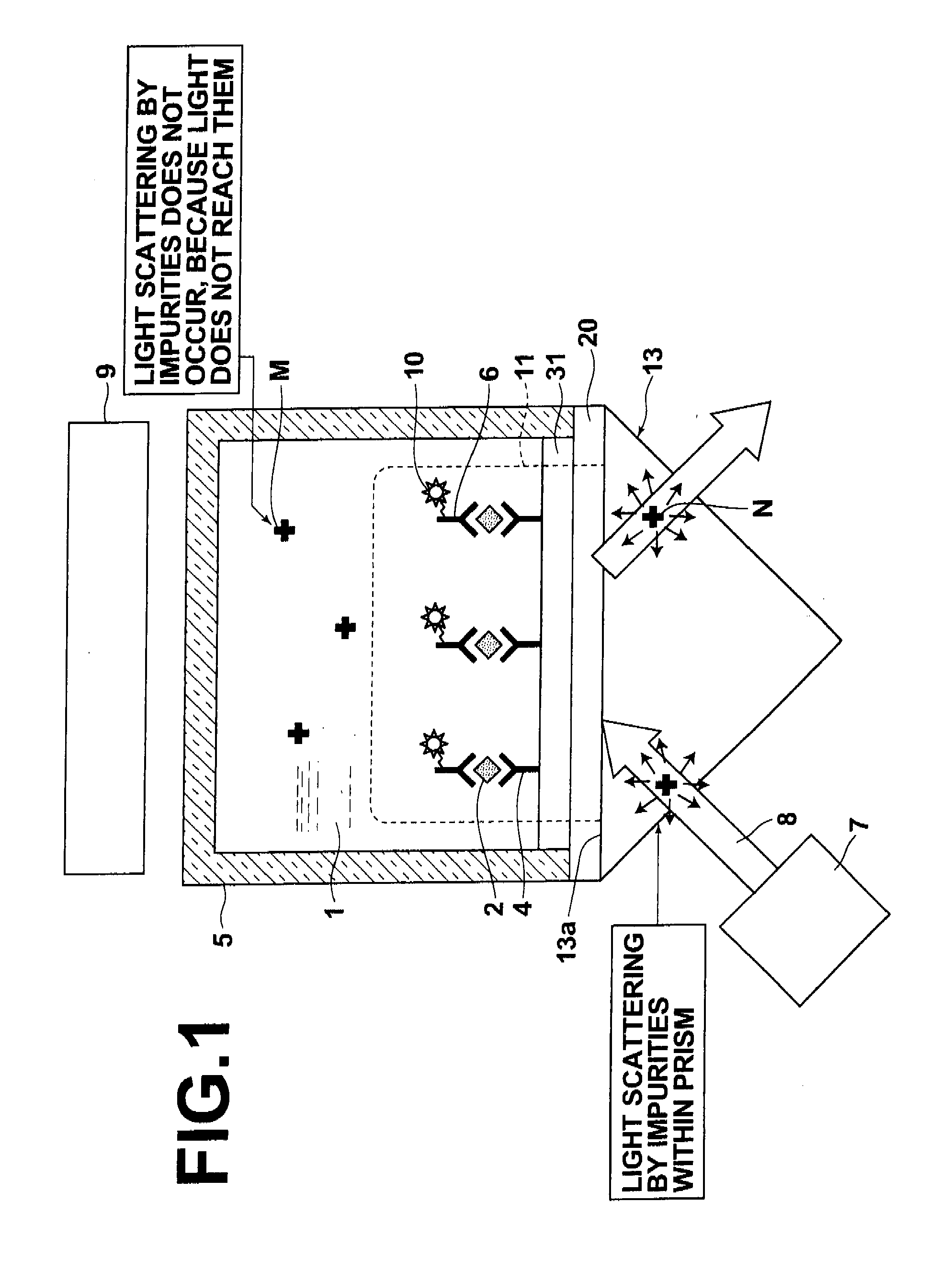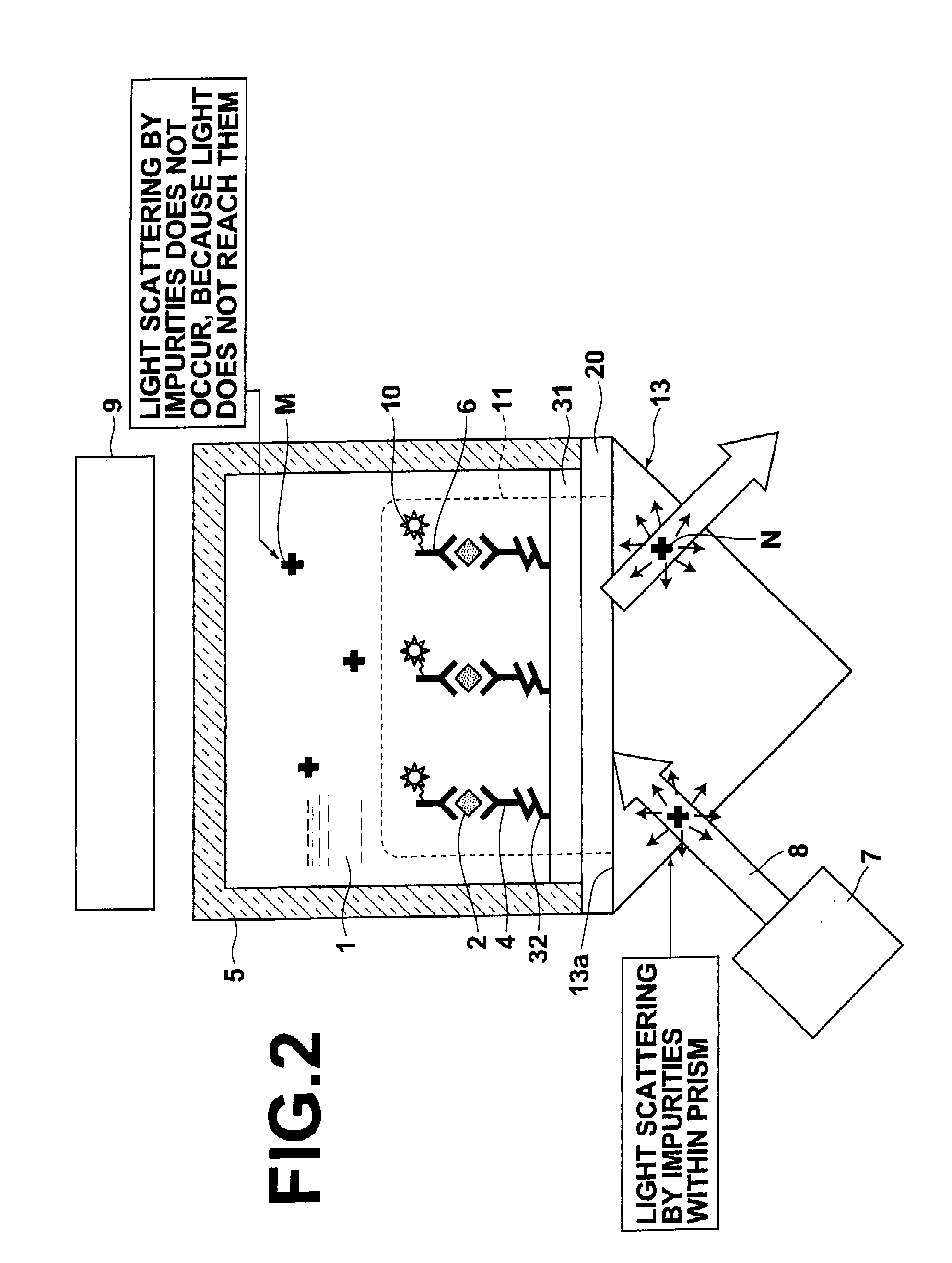Surface plasmon enhanced fluorescence sensor and fluorescence detecting method
a surface plasmon and fluorescence sensor technology, applied in the field of fluorescence sensors, can solve the problems of low fluorescence detection sensitivity, low sensitivity of fluorescence detection, and light scattered by impurities other than the detection target substance becomes noise, etc., to achieve high sensitivity, high excitation energy, and high sensitivity
- Summary
- Abstract
- Description
- Claims
- Application Information
AI Technical Summary
Benefits of technology
Problems solved by technology
Method used
Image
Examples
first embodiment
[0060]FIG. 1 is a side view that illustrates the schematic structure of a surface plasmon enhanced fluorescence sensor (hereinafter, simply referred to as “fluorescencesensor”) according to the present invention. As illustrated in FIG. 1, the fluorescence sensor comprises: a semiconductor laser light source 7, for emitting an excitation light beam 8 having a wavelength of 635 nm, for example; a prism 13 (dielectric block), formed of a material that transmits the excitation light beam 8 and provided at a position such that the excitation light beam 8 enters it at an end facet thereof; a metal film 20, formed on a surface 13a of the dielectric block 13; a non flexible polymer film, formed on the metal film 20; a sample holding portion 5, for holding a liquid sample 1 such that the liquid sample 1 contacts the non flexible polymer film 31 at the side opposite the prism 13; and photodetector 9 (fluorescence detecting means), provided above the sample holding portion 5.
[0061]Note that in...
second embodiment
[0082]However, in the fluorescence sensor of the second embodiment, the linkers 32 that bond with the primary antibodies 4 are formed on the non flexible film 32. The linkers 32 block the secondary antibodies 6 and the antigens 2. Therefore, the secondary antibodies 6 and the antigens 2 are prevented from being non specifically adsorbed onto the non flexible film 31, and false positive detection is prevented. Meanwhile, the primary antibodies 4 which are to be provided on the surface of the non flexible film 31 may be specifically bonded with the linkers 32, to be supplied on the surface of the non flexible film 31.
[0083]Table 1 below compare and illustrate the detection limits of the fluorescence sensor of the second embodiment and conventional fluorescence sensors. In Table 1, the columns indicated by A, B, C, and D represent the detection limit of a conventional sensor having a basic structure as illustrated in FIG. 3, a conventional sensor that employs the ELISA method, a conven...
PUM
| Property | Measurement | Unit |
|---|---|---|
| thickness | aaaaa | aaaaa |
| thickness | aaaaa | aaaaa |
| thickness | aaaaa | aaaaa |
Abstract
Description
Claims
Application Information
 Login to View More
Login to View More - R&D
- Intellectual Property
- Life Sciences
- Materials
- Tech Scout
- Unparalleled Data Quality
- Higher Quality Content
- 60% Fewer Hallucinations
Browse by: Latest US Patents, China's latest patents, Technical Efficacy Thesaurus, Application Domain, Technology Topic, Popular Technical Reports.
© 2025 PatSnap. All rights reserved.Legal|Privacy policy|Modern Slavery Act Transparency Statement|Sitemap|About US| Contact US: help@patsnap.com



